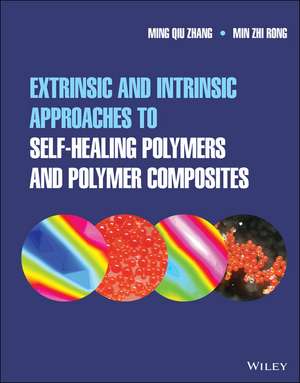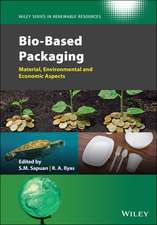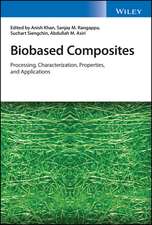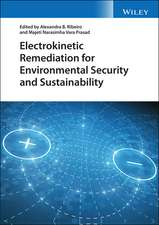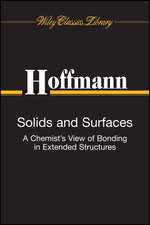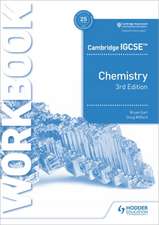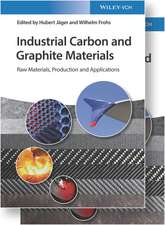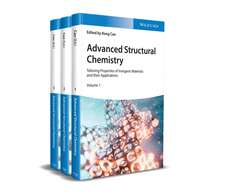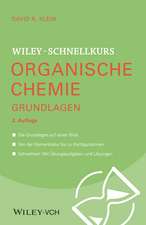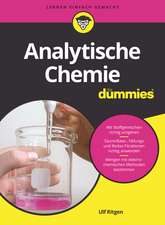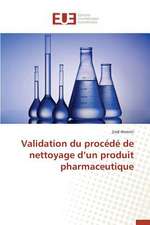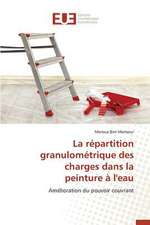Extrinsic and Intrinsic Approaches to Self–Healing Polymers and Polymer Composites
Autor MQ Zhangen Limba Engleză Hardback – 28 apr 2022
Preț: 1180.70 lei
Preț vechi: 1297.47 lei
-9% Nou
Puncte Express: 1771
Preț estimativ în valută:
225.93€ • 246.18$ • 190.38£
225.93€ • 246.18$ • 190.38£
Carte tipărită la comandă
Livrare economică 24 aprilie-08 mai
Preluare comenzi: 021 569.72.76
Specificații
ISBN-13: 9781119629955
ISBN-10: 1119629950
Pagini: 352
Dimensiuni: 224 x 285 x 31 mm
Greutate: 1.11 kg
Editura: Wiley
Locul publicării:Hoboken, United States
ISBN-10: 1119629950
Pagini: 352
Dimensiuni: 224 x 285 x 31 mm
Greutate: 1.11 kg
Editura: Wiley
Locul publicării:Hoboken, United States
Cuprins
Preface
Chapter 1 Basics of self-healing - state of the art
1.1 Background
1.1.1 Adhesive bonding for healing thermosetting materials
1.1.2 Fusion bonding for healing thermoplastic materials
1.1.3 Bioinspired self-healing
1.2 Intrinsic self-healing
1.2.1 Self-healing based on physical interactions
1.2.2 Self-healing based on chemical interactions
1.2.3 Self-healing based on supramolecular interactions
1.3 Extrinsic self-healing
1.3.1 Self-healing in terms of healant loaded pipelines
1.3.2 Self-healing in terms of healant loaded microcapsules
1.4 Insights for future work
1.5 References
Chapter 2 Extrinsic self-healing via addition polymerization
2.1 Design and selection of healing system
2.2 Microencapsulation of mercaptan and epoxy by in-situ polymerization
2.2.1 Microencapsulation of mercaptan
2.2.2 Microencapsulation of epoxy
2.3 Filling polymeric tubes with mercaptan and epoxy
2.4 Characterization of self-healing functionality
2.4.1 Self-healing epoxy materials with embedded dual encapsulated healant - healing of crack due to monotonic fracture
2.4.2 Factors related to performance improvement
2.4.3 Self-healing epoxy materials with embedded dual encapsulated healant - healing of fatigue crack
2.4.4 Self-healing epoxy/glass fabric composites with embedded dual encapsulated healant - healing of impact damage
2.4.5 Self-healing epoxy/glass fabric composites with self-pressurized healing system
2.5 Concluding remarks
2.6 References
Chapter 3 Extrinsic self-healing via cationic polymerization
3.1 Thermosetting
3.1.1 Microencapsulation of epoxy by UV irradiation-induced interfacial copolymerization
3.1.2 Encapsulation of boron-containing curing agent
3.1.2.1 Loading boron-containing curing agent onto porous media
3.1.2.2 Microencapsulation of boron-containing curing agent via hollow capsules approach
3.1.3 Characterization of self-healing functionality
3.1.3.1 Self-healing epoxy materials with embedded epoxy-loaded microcapsules and (C2H5)2O*BF3-loaded sisal
3.1.3.2 Self-healing epoxy materials with embedded dual encapsulated healant
3.1.4 Preparation of silica walled microcapsules containing SbF5*HOC2H5/HOC2H5
3.1.5 Self-healing epoxy materials with embedded epoxy-loaded microcapsules and SbF5*HOC2H5/HOC2H5-loaded silica capsules
3.1.6 Preparation of silica walled microcapsules containing TfOH
3.1.7 Self-healing epoxy materials with embedded epoxy-loaded microcapsules and TfOH-loaded silica capsules
3.2 Thermoplastics
3.2.1 Preparation of IBH/GMA-loaded microcapsules
3.2.2 Self-healing PS composites filled with IBH/GMA-loaded microcapsules and NaBH4 particles
3.3 Concluding remarks
3.4 References
Chapter 4 Extrinsic self-healing via anionic polymerization
4.1 Preparation of epoxy-loaded microcapsules and latent hardener
4.1.1 Microencapsulation of epoxy by in-situ condensation
4.1.2 Preparation of imidazole latent hardener
4.2 Self-healing epoxy materials with embedded epoxy-loaded microcapsules and latent hardener
4.3 Self-healing epoxy/woven glass fabric composites with embedded epoxy-loaded microcapsules and latent hardener - healing of interlaminar failure
4.4 Durability of healing ability
4.5 Self-healing epoxy/woven glass fabric composites with embedded epoxy-loaded microcapsules and latent hardener - healing of impact damage
4.6 Concluding remarks
4.7 References
Chapter 5 Extrinsic self-healing via miscellaneous reactions
5.1 Extrinsic self-healing via nucleophilic addition and ring-opening reactions
5.1.1 Microencapsulation of GMA by in-situ polymerization
5.1.2 Self-healing epoxy materials with embedded single-component healant
5.2 Extrinsic self-healing via living polymerization
5.2.1 Preparation of living PMMA and its composites with GMA-loaded microcapsules
5.2.2 Self-healing performance of living PMMA composites filled with GMA-loaded microcapsules
5.2.3 Preparation of GMA-loaded multilayered microcapsules and their PS based composites
5.2.4 Self-healing performance of PS composites filled with GMA-loaded multilayered microcapsules
5.3 Extrinsic self-healing via free radical polymerization
5.3.1 Microencapsulation of styrene and BPO
5.3.2 Self-healing performance of epoxy composites filled with the dual capsules
5.4 Concluding remarks
5.5 References
Chapter 6 Intrinsic self-healing via Diels-Alder reaction
6.1 Molecular design and synthesis
6.1.1 Synthesis and characterization of DGFA
6.1.2 Reversibility of DA bonds and crack remendability of DGFA based polymer
6.1.3 Synthesis and characterization of FGE
6.1.4 Reversibility of DA bonds and crack remendability of FGE based polymer
6.2 Blends of DGFA and FGE
6.2.1 Reversibility of DA bonds
6.2.2 Crack remendability of cured DGFA/FGE blends
6.3 Concluding remarks
6.4 References
Chapter 7 Intrinsic self-healing via synchronous fission/radical recombination of C-ON bond
7.1 Thermal reversibility of alkoxyamine in polymer solids
7.2 Self-healing crosslinked polystyrene
7.2.1 Synthesis
7.2.2 Characterization
7.3 Self-healing epoxy
7.3.1 Synthesis
7.3.2 Characterization
7.4 Self-healing polymers containing alkoxyamine with oxygen insensitivity and reduced homolysis temperature
7.4.1 Synthesis
7.4.2 Characterization
7.5 Reversible shape memory polyurethane network with intrinsic self-healability of wider crack
7.5.1 Synthesis
7.5.2 Characterization
7.6 Concluding remarks
7.7 References
Chapter 8 Intrinsic self-healing via exchange reaction of disulfide bond
8.1 Room-temperature self-healable and remoldable crosslinked polysulfide
8.2 Sunlight driven self-healing polymers containing disulfide bond
8.2.1 Crosslinked polyurethane
8.2.1.1 Bulk polymer
8.2.1.2 Composites with silver nanowires as strain sensor
8.2.2 Commercial silicone elastomer
8.3 Self-healing and reclaiming of vulcanized rubber
8.4 Concluding remarks
8.5 References
